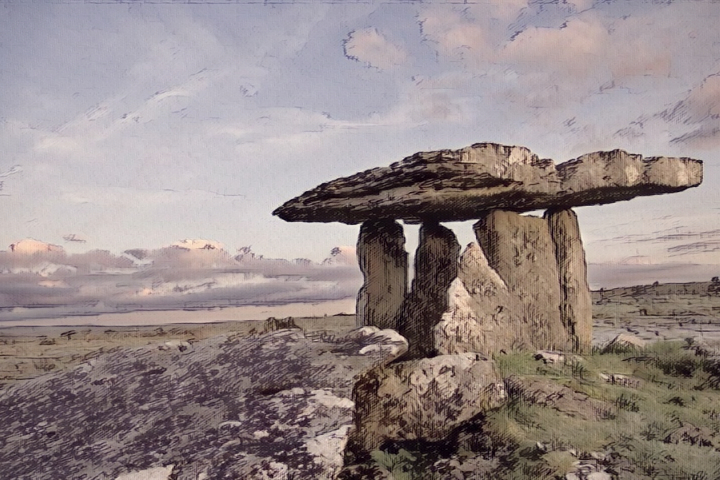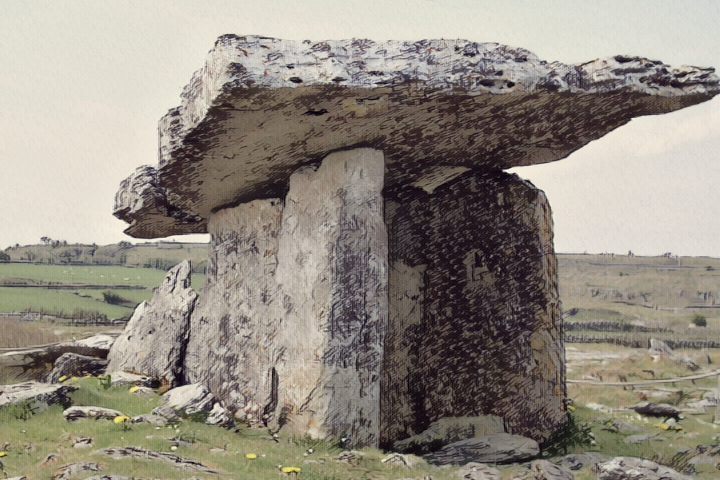Poulnabrone dolmen, also known as Poll na Brón, is an ancient portal tomb located in the Burren, County Clare, Ireland. It is believed to date back to the Neolithic period, between 4200 BC and 2900 BC, and is considered one of the most well-known and photographed of the approximately 172 dolmens in Ireland. The tomb is situated on a high and desolate point in the Burren, and consists of three standing portal stones supporting a heavy horizontal capstone. The location is a karst setting, formed from limestone that was laid down around 350 million years ago.

It is believed that the tomb was built by Neolithic farmers, who may have chosen the location for ritual purposes, as a territorial marker, or as a collective burial site. The original monument would have been covered with soil and capped with a cairn, but today only the “stone skeleton” remains. In 1986 and 1988, excavations of the site revealed around 33 human remains, including those of adults, children, and a much later Bronze Age infant, along with various stone and bone objects that were likely placed with them at the time of interment.
The tomb is situated in a rocky and unblemished field in the remote townland of Poulnabrone, Kilcorney, close to the R480 road, 8 km south of Ballyvaughan. It is believed that it was used as a center for ritual until well into the Bronze Age, and was also possibly used as a territorial marker in the Neolithic landscape. The design of the tomb includes a large capstone which is thirteen feet in length, supported by two sets of slender upright parallel portal stones, creating a chamber that tapers eastwards. Radiocarbon dating suggests that the tomb was in use as a burial site between 3,800 and 3,200 BC.

Excavations of the site in 1986 and 1988 included the replacement of a cracked stone and the removal of human remains and personal items, including a stone axe, jewelry made from bone and quartz crystals, weapons, and pottery. The fact that none of the skeletons were intact led to the conclusion that the site was not intended as an ongoing burial place. In June 2020, the earliest incidence of Down syndrome was found in genomic evidence from an infant buried under the monument. The findings are now on loan from the National Museum of Ireland and can be viewed at the Clare Museum in Ennis.
